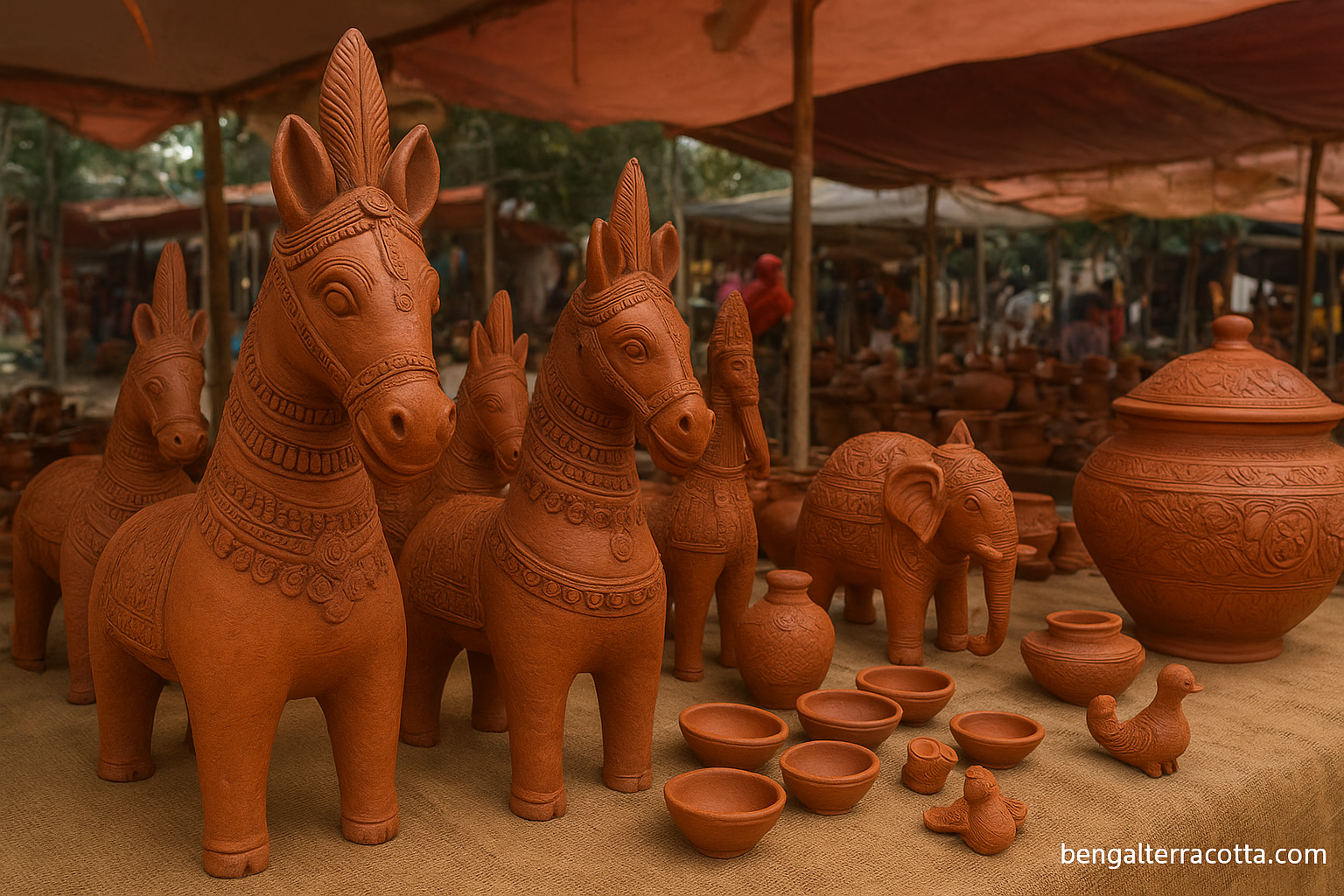Bengal is a land where every brushstroke, sculpture, and design tells a story — of devotion, culture, and community. Traditional Bengali art, shaped by centuries of spiritual, social, and folk influence, reflects the rich soul of the region. From temple walls to household rituals, Bengali art has been an inseparable part of life, identity, and storytelling.
1. Terracotta Art: Bengal’s Clay Heritage
One of the most iconic forms of traditional Bengali art is terracotta. From ancient temples in Bishnupur to decorative artifacts, the use of baked red clay is deeply symbolic. The intricate relief work often depicts scenes from epics like the Ramayana and Mahabharata, along with everyday village life. These artworks, both religious and narrative, serve as cultural time capsules molded by hand.
2. Alpana: Sacred Floor Art
Alpana is a form of ritualistic painting done on floors, especially during religious festivals, weddings, and housewarming ceremonies. Traditionally made with a paste of rice flour and water, these white designs — often floral, circular, or symbolic — are created with fingers, reflecting purity and spirituality. Alpana is not just decoration but a way of inviting divine blessings into the home.
3. Pattachitra: Scrolls That Sing
The Patua or scroll painters of Bengal combine visual art with storytelling. Pattachitra (“cloth painting”) involves long, hand-painted scrolls depicting mythological tales, social messages, or folklore. As the scroll is unfurled during performance, the artist sings the narrative, creating an immersive experience. These scrolls are bold, colorful, and culturally rich — a perfect fusion of visual and oral tradition.
4. Kantha Embroidery: Stories in Stitches
Kantha is a traditional form of embroidery from rural Bengal, where old sarees or dhotis are layered and hand-stitched into quilts, dupattas, and garments. Each piece is unique, often reflecting the personal thoughts, memories, or surroundings of the women who craft them. The running stitch technique and storytelling through thread make Kantha both sustainable and sentimental.
5. Clay Dolls & Toys: Rural Craft with Charm
Villages across Bengal have been producing handmade clay dolls and toys for generations. From the bright-hued Bankura horse to the Lakshmi-Saraswati dolls worshipped during festivals, these items are more than playthings — they are carriers of folklore and symbols of divine protection. The craftsmanship is simple yet deeply rooted in tradition.
6. Kalighat Paintings: Art with a Bold Voice
Originating in 19th-century Kolkata near the Kalighat Temple, Kalighat paintings are bold, satirical, and expressive. Initially religious in theme, these paintings evolved to depict contemporary life, social issues, and humorous commentary. With their flat colors, swift brushwork, and stylized figures, Kalighat paintings played a role in shaping modern Indian art.
Preserving a Cultural Legacy
As modernization changes the artistic landscape, it becomes even more important to preserve and promote traditional Bengali art forms. At Bengal Terracotta, we celebrate these timeless crafts by supporting artisans, sharing their stories, and offering handcrafted pieces that honor heritage.
Art That Lives, Breathes, and Speaks
Traditional Bengali art is not confined to museums or ancient scripts. It lives on in temples, courtyards, and homes — in every curve of terracotta, every swirl of Alpana, every stitch of Kantha. It is a celebration of Bengal’s past, present, and soul.

